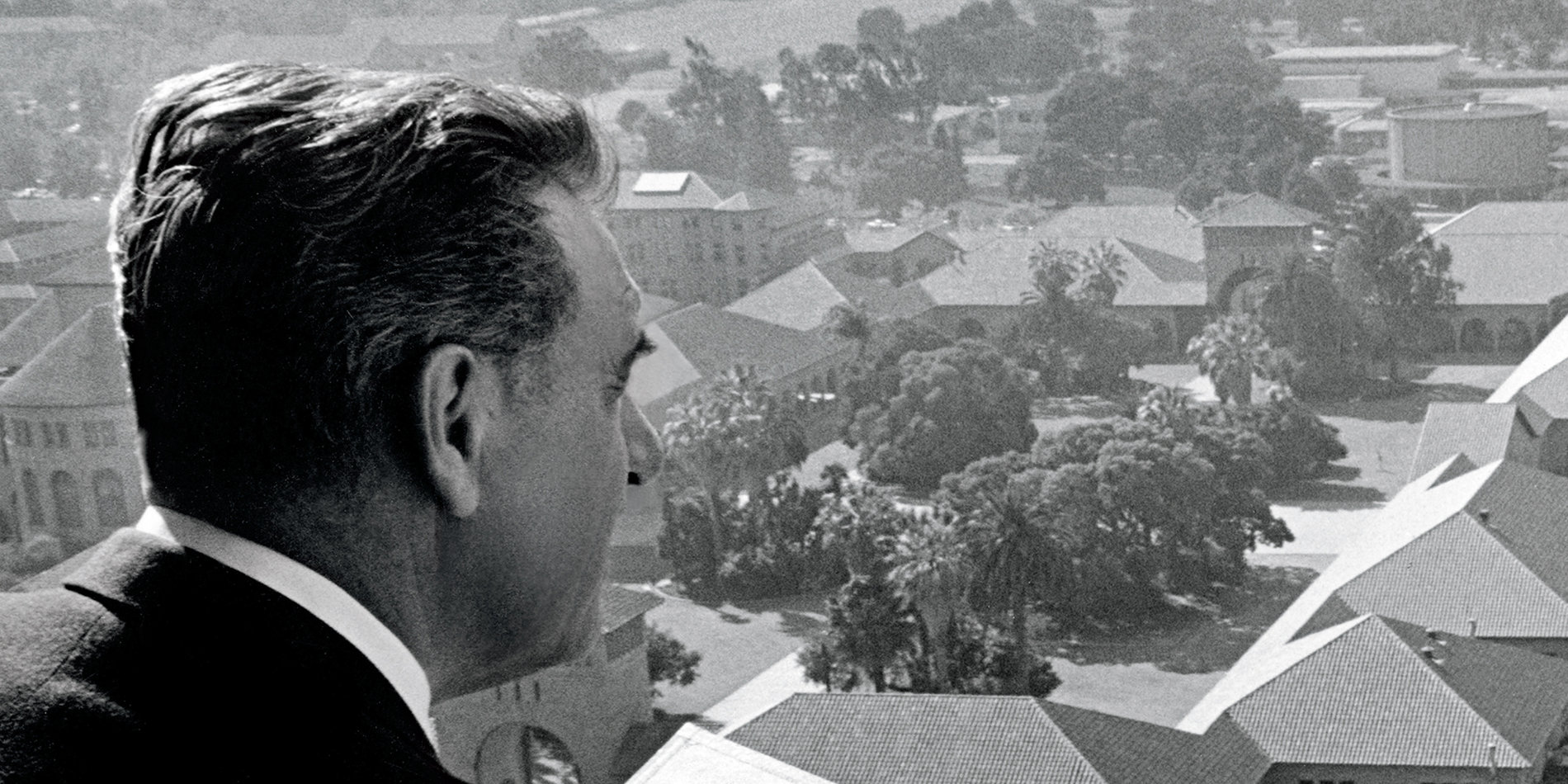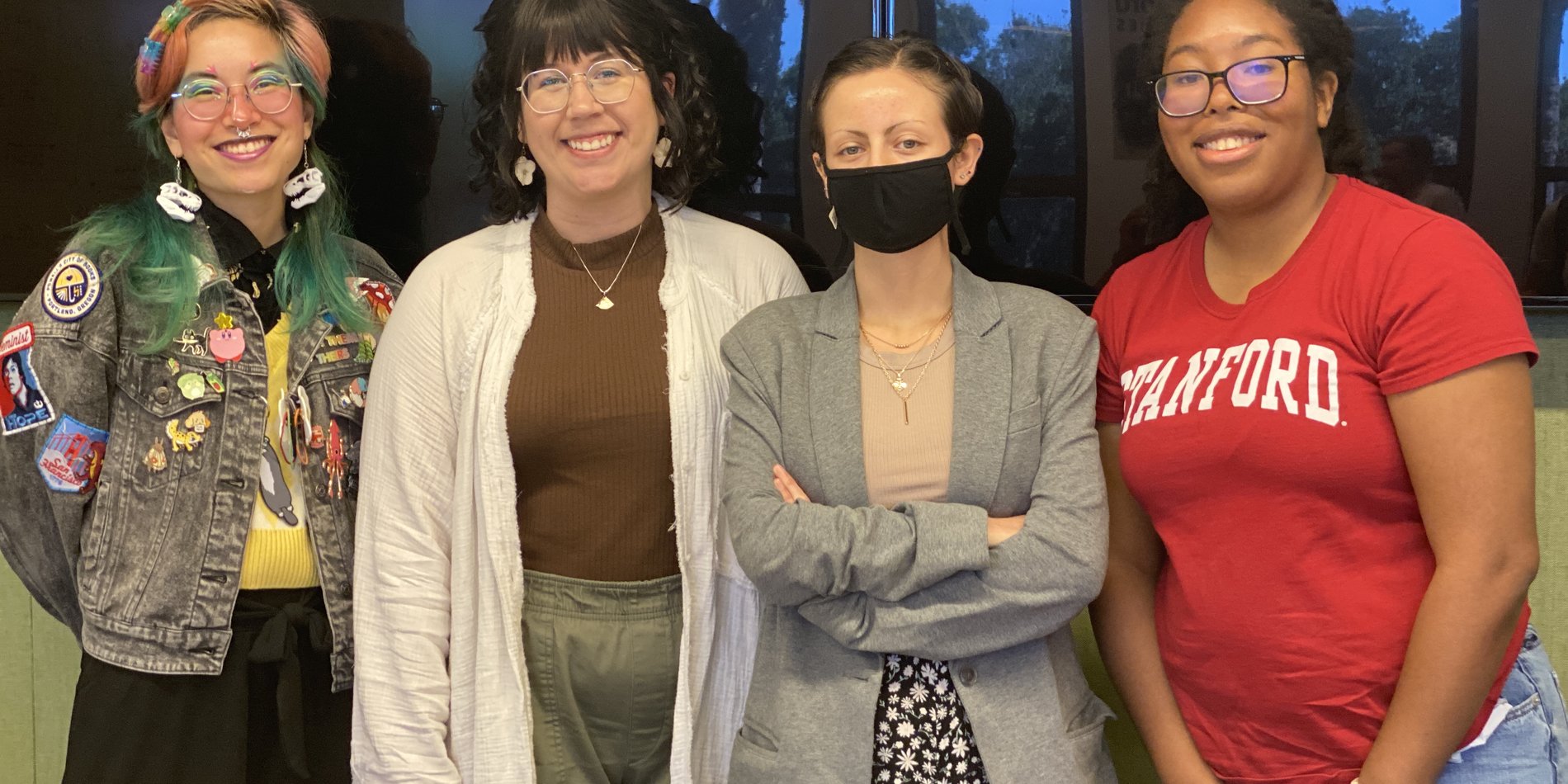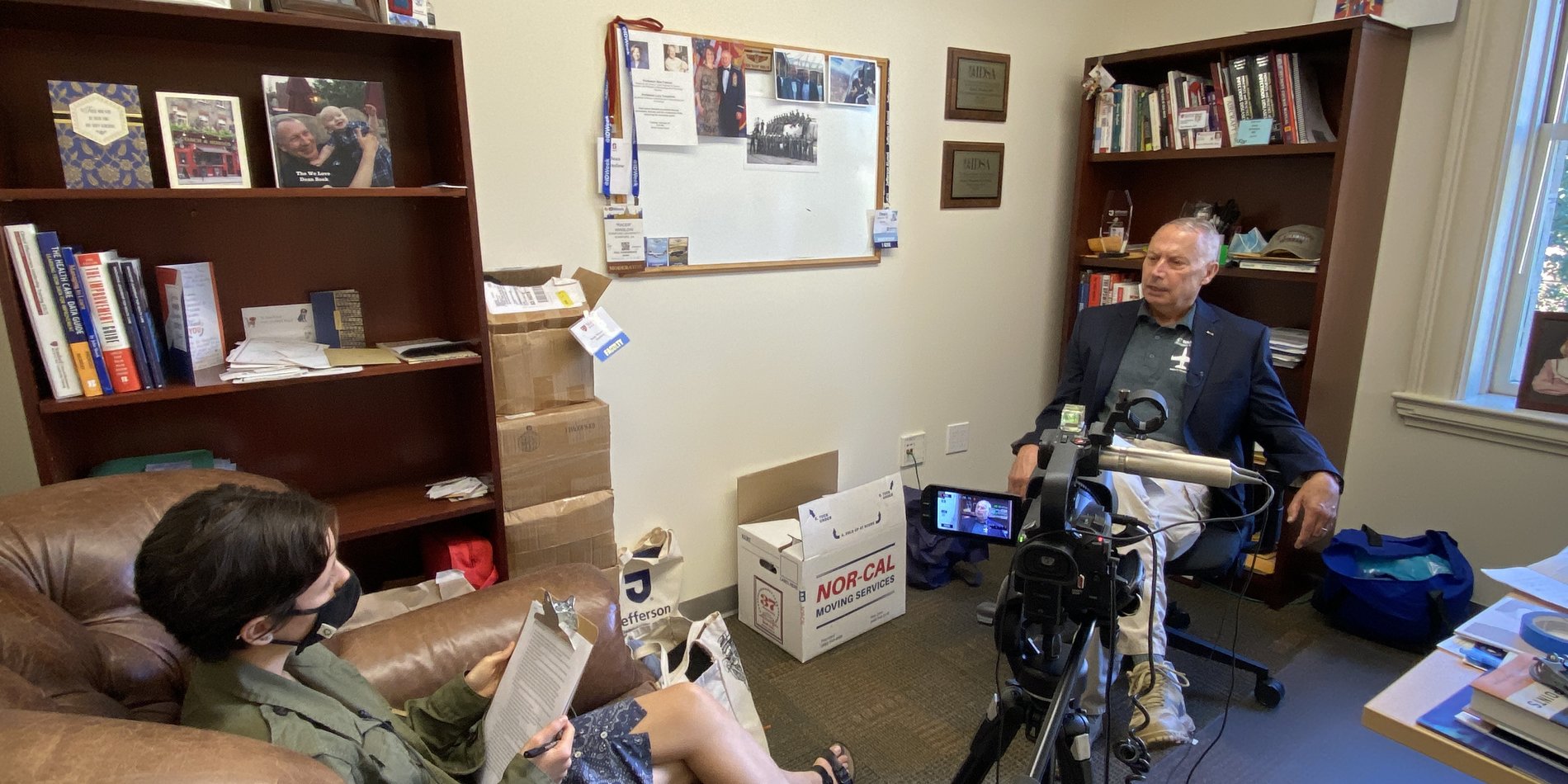Stanford’s Oral History Program celebrates its 500th interview
Kate Chesley of the Stanford News Service wrote about an important milestone reached by the Stanford Historical Society Oral History Program. Her original article is included below.
Stanford’s Oral History Program celebrates its 500th interview
Years from now, when historians piece together the story of Stanford, they may be listening to the tales of faculty, staff, students and alumni rather than reading them.
Oral interviews have become a staple of historical archives, especially since the Depression, when the U.S. Works Progress Administration hired writers to collect and transcribe remembrances. Throughout the 1960s and ’70s, oral history projects gained popularity because they were recognized as opportunities to capture personal experiences and behind-the-scene details that more rarified written histories often lacked.
Thanks to the Oral History Program and its army of volunteers, Stanford may have brought the art of gathering university oral history to an entirely new level, according to program manager Natalie Marine-Street. The program, which dates to 1978 and is under the auspices of the Stanford Historical Society in partnership with the University Archives, recently celebrated its 500th interview.
The 500th interview features Kathy Ku, who retired in 2018 after serving nearly four decades in Stanford’s Office of Technology Licensing. Iris Brest, former associate general counsel and a member of the Stanford Historical Society Oral History Committee, led Ku through her memories about the transformative university technology she helped nurture – from DNA cloning to the algorithm that drives Google searches.
Transformational memories
In many ways, Ku is the quintessential interviewee: someone with a long Stanford association who witnessed the university’s role in dramatic developments that fundamentally changed the world.
The list of oral histories featured on the Stanford Historical Society website illustrates the wide range of subjects. They include, for example:
- Nobel laureate Burton Richter, former director of the SLAC National Accelerator Laboratory, a pioneering figure in the development of high-energy electron storage rings
- Psychology Professor Eleanor Maccoby, a pioneer in gender studies and child and family psychology and the first woman to serve as chair of the Department of Psychology
- Artist and art faculty member Nathan Oliveira, a leading member of the Bay Area figurative movement
As copious as the oral history archives are, however, there are a few figures that the program missed, said Marine-Street, who earned a history doctorate from Stanford in 2016. For instance, missing is a comprehensive oral history with Wallace Sterling, the Stanford president who oversaw the university’s rise from a good regional school to a world-class university from 1949 to 1968. Also missing is Richard Lyman, the Stanford president credited with steering the university through the turbulent protests of the 1960s and ’70s. Marine-Street wishes, in addition, that the program had been able to interview Irmgard Flügge-Lotz, the first female engineering professor at Stanford.
Beyond individual faculty, staff and students, the program has also collected thematic memories, interviewing, for instance, members of the classes of 1957 and 1958 during reunion weekends to explore such lost undergraduate customs as the Big Game bonfire. Another recent project focused on the 50th anniversary of the Faculty Senate and the controversies with which members have grappled. Currently, the group is capturing the administrative story of athletics to understand how the Cardinal has gained and maintained its preeminence nationwide.
Favorite memories
Candidates for oral history interviews include the obvious, like university presidents and provosts, Nobel Prize winners and Faculty Senate leaders. But Marine-Street said the program also interviews people who might not be as well known. She cites an engineer from the Stanford Research Institute – now SRI International – who witnessed the organization’s separation from Stanford over classified research controversies in the late 1960s. The engineer, who asked to be interviewed, had interesting stories to tell about SRI. But what he really wanted to talk about was his participation in the nuclear weapons Manhattan Project.
“Al Kaehler wasn’t a major player at SRI, but he gave us a great sense of what it meant to be an engineer in California in the mid-20th century,” she said.
That interview is among those Marine-Street finds intriguing, as is one with Paul Farnsworth, whose scholarly work focused on the psychology of music. Farnsworth’s interview, however, ventured into more surprising territory when he shared details of a visit to Stanford by magician Harry Houdini. Among others she finds notable are interviews with computer scientist Donald Knuth, historian Al Camarillo, developmental biologist Lucy Shapiro, tennis coach Dick Gould and former dean of admission Jean Chu.
Similarly, a 2008 interview with former Provost Albert Hastorf provided insight into the working relationship between Sterling and Provost Fred Terman and, by extension, helped explain the world-class institution they nurtured and the high-technology innovation they inspired.
“Wally never told anyone bad news that I know of. So, Fred kind of had to,” Hastorf shared. “In essence, Wally let Fred run the intellectual establishment … and Fred was impressive.”
1978 origins
The Oral History Program had its genesis in 1978, when Frederic Glover, a former journalist, founder of the Stanford News Service and an aide to four university presidents, first pulled out a cassette recorder and began documenting notable remembrances. His first interview was likely conducted with university administrator David Jacobson.
“I think Glover saw that the university’s elder statesmen – people who had witnessed real change – were getting older, and that this was going to be the last chance to capture their voices,” Marine-Street said. “This was a time when historians were turning away from just doing histories of presidents and kings and starting to write the histories of more ordinary people. The technology was making audio recording more feasible, so the methodology of oral history was in the air at the time the Stanford program began.”
The project went dormant in the 1990s, as financial support dried up. In 2006, Stanford Historical Society volunteers, including former academic secretary Susan Schofield and former associate dean of research Patricia Devaney, resurrected the program with support from the Packard Foundation and the Office of the President and Provost.
Today, the program continues to be funded by the provost, while also receiving support from the schools of Humanities & Sciences, Engineering and Law, and from an endowment administered by the Stanford Historical Society.
Volunteers help scout interview subjects, with nominations also coming from throughout the university. Once a subject is selected, an interviewer, who has undergone training with Marine-Street, begins the research that will then ensure an accurate and effective interview. Interviews are recorded digitally, transcribed and made available online through the University Libraries.
“It’s a communal project that has been carried out over the decades by a lot of people who love Stanford and its history,” Marine-Street said. “It could only have been done with the care, attention and passion that our volunteers have devoted to it.”
Community toolkits
To expand its efforts and capture even more Stanford voices, the program and University Archives have developed a toolkit with support from the Stanford Associates that allows interested groups to pursue thematic projects on their own. They offer the groups training, tips on interview design and support with transcription and archiving. Among the first groups to participate have been alumni who were student activists during the 1960s and ’70s.
“They still stay in touch online and meet from time to time,” Marine-Street said. “We helped them put together an oral history project to celebrate the 50th anniversary of some major anti-Vietnam War protests that took place on campus and in the surrounding era. They want their personal experience of those events and the story of the impact they had on their subsequent lives to be passed down. It is going to be a really interesting and historically significant collection when they are done.”


